Practice Free AZ-120 Exam Online Questions
You plan to deploy an SAP landscape on Azure that will use SAP HANA on Azure (Large Instances).
You need to ensure that outbound traffic from the application tier can flow only to the database tier.
What should you use?
- A . network virtual appliances (NVAs)
- B . network security groups (NSGs)
- C . application security groups
- D . Azure Firewall
HOTSPOT
You have an on-premises SAP NetWeaver production landscape and an Azure subscription that contains the resources shown in the following table.
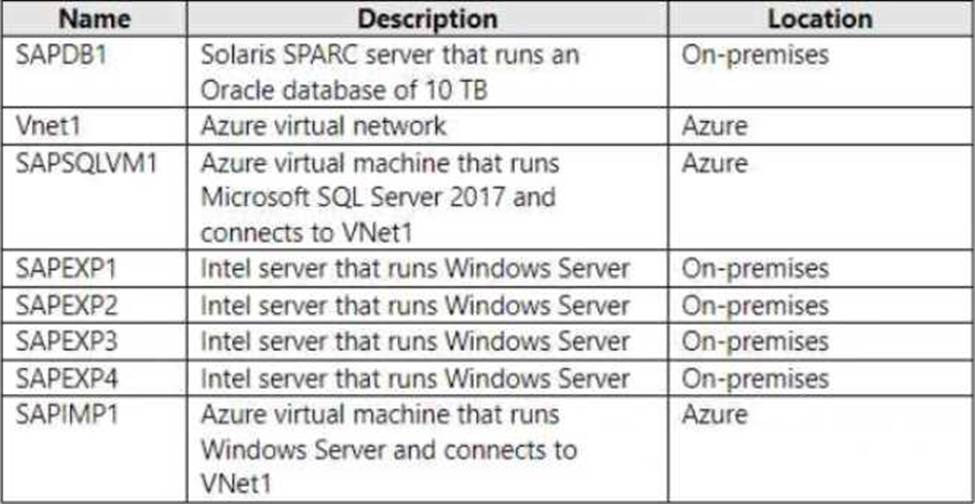
You have a 10-Gbps ExpressRoute circuit between the on-premises environment and VNet1.
You plan to migrate the landscape to Azure.
As part of the solution, you need to migrate the on-premises Oracle database to SAPSQLVM1. The solution must minimize how long it will take to complete the data migration.
What should you use? To answer, select the appropriate options in the answer area. NOTE: Each correct selection is worth one point.
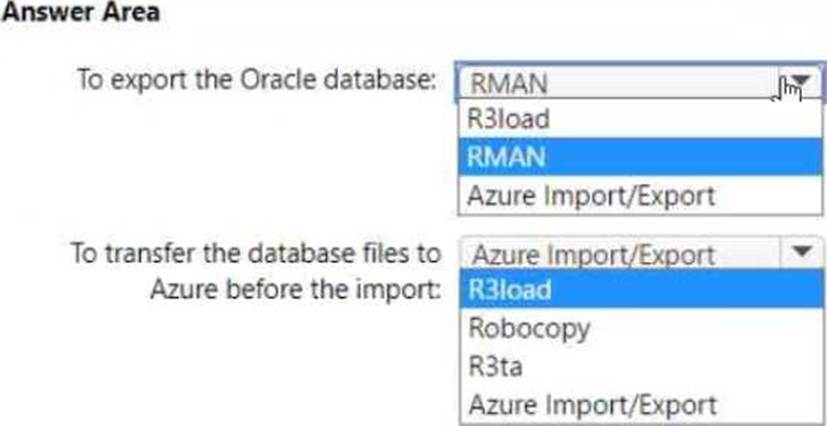
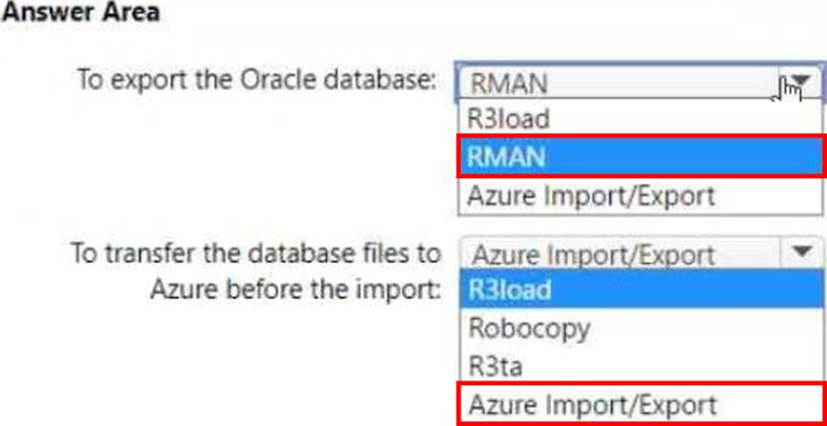
HOTSPOT
You are deploying an SAP production landscape in Azure.
You need to create an Azure policy that meets the following requirements:
• Limits which applications can be installed on virtual machines
• Ensures that when a virtual machine is deployed, the virtual machine has the latest version of the extension to be installed
How should you complete the policy? To answer, select the appropriate options in the answer area. NOTE: Each correct selection is worth one point.
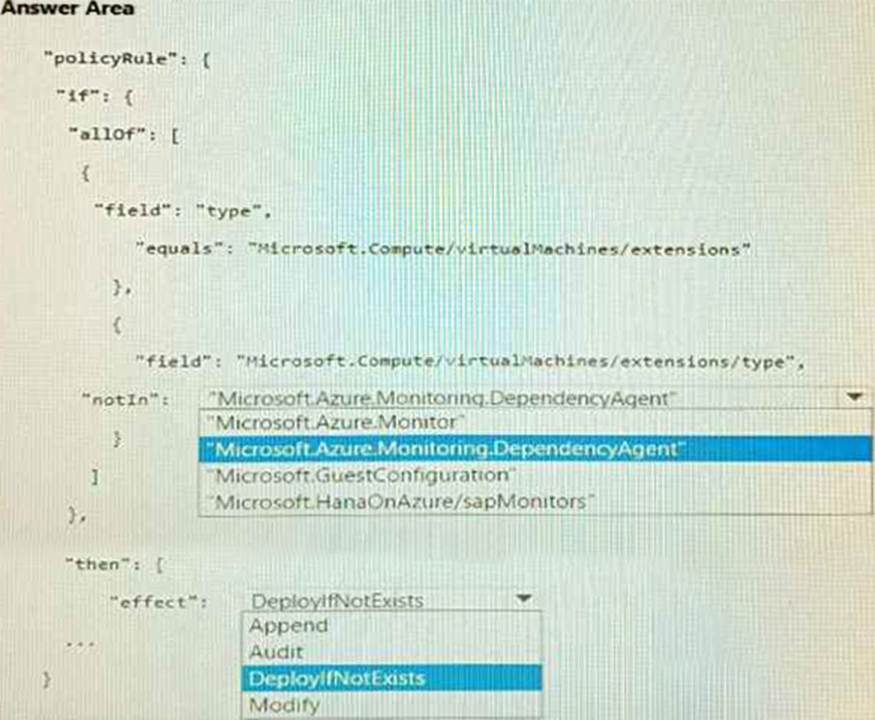
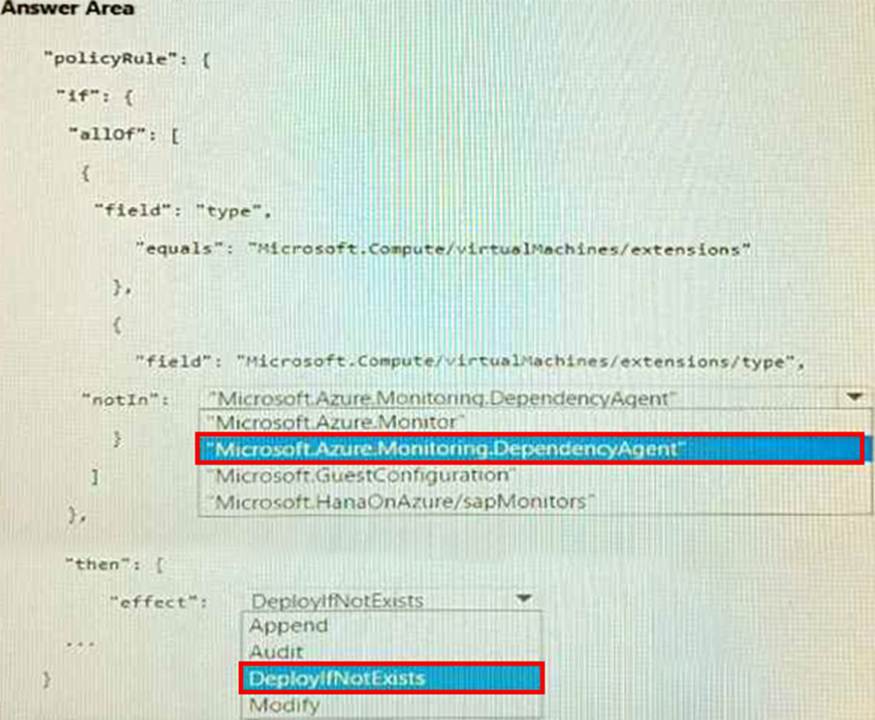
Note: This question is part of a series of questions that present the same scenario. Each question in the series contains a unique solution that might meet the stated goals. Some question sets might have more than one correct solution, while others might not have a correct solution.
After you answer a question in this section, you will NOT be able to return to it. As a result, these questions will not appear in the review screen.
You deploy SAP HANA on Azure (Large Instances).
You need to back up the SAP HANA database to Azure.
Solution: You configure DB13 to back up directly to a local disk.
Does this meet the goal?
- A . Yes
- B . No
B
Explanation:
You need to back up the SAP HANA database to Azure, not to a local disk.
Reference: https://docs.microsoft.com/en-us/azure/backup/sap-hana-db-about
https://docs.microsoft.com/en-us/azure/backup/backup-azure-sap-hana-database#configure-backup
HOTSPOT
For each of the following statements, select Yes if the statement is true. Otherwise, select No. NOTE: Each correct selection is worth one point.


DRAG DROP
You have an on-premises SAP environment that runs on SUSE Linux Enterprise Server (SLES) servers and Oracle. The version of the SAP ERP system is 6.06 and the version of the portal is SAP NetWeaver 7.3.
You need to recommend a migration strategy to migrate the SAP ERP system and the portal to Azure.
The solution must be hosted on SAP HANA.
What should you recommend? To answer, drag the appropriate tools to the correct components. Each tool may be used once, more than once, or not at all. You may need to drag the split bar between panes or scroll to view content. NOTE: Each correct selection is worth one point.


Explanation:
1) SUM+DMO+System update.
2) Heterogeneous system copy.
Reference: https://blogs.sap.com/2017/10/05/your-sap-on-azure-part-2-dmo-with-system-move/
Topic 3, Misc. Questions
You plan to migrate an SAP HANA instance to Azure.
You need to gather CPU metrics from the last 24 hours from the instance.
Solution: You query views from SAP HANA Studio.
Does this meet the goal?
- A . Yes
- B . No
A
Explanation:
SAP HANA Studio -> Administration -> Overview -> CPU Usage.
SAP HANA Studio -> Administration -> Performance -> Load -> [System] CPU.
Note: This question is part of a series of questions that present the same scenario. Each question in the series contains a unique solution that might meet the stated goals. Some question sets might have more than one correct solution, while others might not have a correct solution.
After you answer a question in this section, you will NOT be able to return to it. As a result, these questions will not appear in the review screen.
You deploy SAP HANA on Azure (Large Instances).
You need to back up the SAP HANA database to Azure.
Solution: You use a third-party tool that uses backint to back up the SAP HANA database to Azure storage.
Does this meet the goal?
- A . Yes
- B . No
B
Explanation:
https://blogs.sap.com/2018/08/31/overview-of-backint-for-sap-hana-and-faq-for-3rd-party-backup-tool-support/
https://documentation.commvault.com/commvault/v11_sp16/article?p=114414.htm
You have an Azure subscription named Sub1 that is linked to a Microsoft Entra tenant named contoso.com. You have an on-premises deployment of SAP Landscape Management (LaMa). You need to ensure that the on-premises LaMa deployment is authorized to manage the SAP resources provisioned to Sub1.
What should you create first?
- A . a user-assigned managed identity in Sub1
- B . a system-assigned managed identity in Sub1
- C . an externalidentityprovidenncontoso.com
- D . an app registration in contoso.com
You are deploying SAP Fiori lo an SAP environment on Azure.
You are configuring SAML 2.0 for an SAP Fiori instance named FPP that uses client 100 to authenticate to an Azure Active Directory (Azure AD) tenant.
Which provider name should you use to ensure that the Azure AD tenant recognizes the SAP Fiori instance?
- A . ldap://FPP
- B . https://FPP
- C . ldap://FPP-100
- D . https://FPP100
D
Explanation:
By default, the provider name is in the format <sid><client>. Azure AD expects the name in the format <protocol>://<name>. We recommend that you maintain the provider name as https://<sid><client> so you can configure multiple SAP Fiori ABAP engines in Azure AD.
Example:
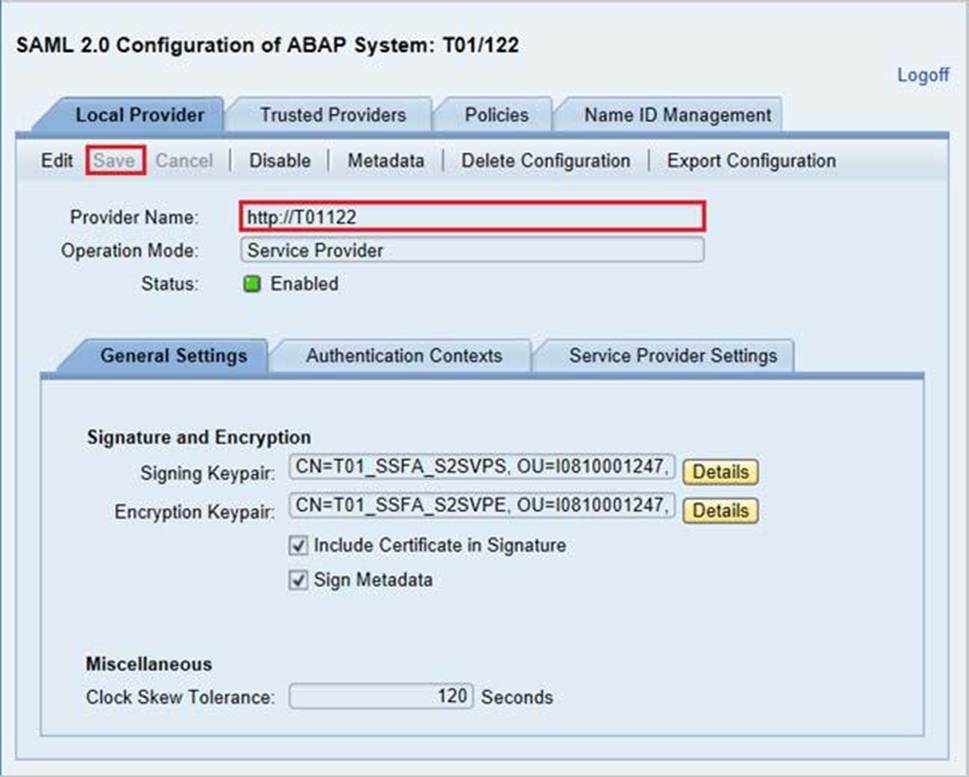
Reference: https://docs.microsoft.com/en-us/azure/active-directory/saas-apps/sap-fiori-tutorial
